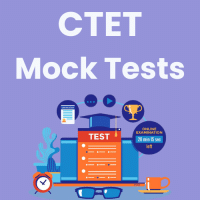CTET & State TET Exam > CTET & State TET Questions > What kind of trade activities were Harappans ...
Start Learning for Free
What kind of trade activities were Harappans involved in?
- a)Only local trade
- b)International trade through sea routes
- c)No trade activities
- d)Only barter system within villages
Correct answer is option 'B'. Can you explain this answer?
Most Upvoted Answer
What kind of trade activities were Harappans involved in?a)Only local ...
The Harappans were involved in international trade through sea routes as well as land routes. They traded goods like beads, cotton, timber, and ornaments with distant regions, including Mesopotamia and other parts of the ancient world. Harappan settlements, such as Lothal, had dockyards that supported maritime trade, indicating their active involvement in sea-based commerce.

|
Explore Courses for CTET & State TET exam
|

|
Question Description
What kind of trade activities were Harappans involved in?a)Only local tradeb)International trade through sea routesc)No trade activitiesd)Only barter system within villagesCorrect answer is option 'B'. Can you explain this answer? for CTET & State TET 2025 is part of CTET & State TET preparation. The Question and answers have been prepared according to the CTET & State TET exam syllabus. Information about What kind of trade activities were Harappans involved in?a)Only local tradeb)International trade through sea routesc)No trade activitiesd)Only barter system within villagesCorrect answer is option 'B'. Can you explain this answer? covers all topics & solutions for CTET & State TET 2025 Exam. Find important definitions, questions, meanings, examples, exercises and tests below for What kind of trade activities were Harappans involved in?a)Only local tradeb)International trade through sea routesc)No trade activitiesd)Only barter system within villagesCorrect answer is option 'B'. Can you explain this answer?.
What kind of trade activities were Harappans involved in?a)Only local tradeb)International trade through sea routesc)No trade activitiesd)Only barter system within villagesCorrect answer is option 'B'. Can you explain this answer? for CTET & State TET 2025 is part of CTET & State TET preparation. The Question and answers have been prepared according to the CTET & State TET exam syllabus. Information about What kind of trade activities were Harappans involved in?a)Only local tradeb)International trade through sea routesc)No trade activitiesd)Only barter system within villagesCorrect answer is option 'B'. Can you explain this answer? covers all topics & solutions for CTET & State TET 2025 Exam. Find important definitions, questions, meanings, examples, exercises and tests below for What kind of trade activities were Harappans involved in?a)Only local tradeb)International trade through sea routesc)No trade activitiesd)Only barter system within villagesCorrect answer is option 'B'. Can you explain this answer?.
Solutions for What kind of trade activities were Harappans involved in?a)Only local tradeb)International trade through sea routesc)No trade activitiesd)Only barter system within villagesCorrect answer is option 'B'. Can you explain this answer? in English & in Hindi are available as part of our courses for CTET & State TET.
Download more important topics, notes, lectures and mock test series for CTET & State TET Exam by signing up for free.
Here you can find the meaning of What kind of trade activities were Harappans involved in?a)Only local tradeb)International trade through sea routesc)No trade activitiesd)Only barter system within villagesCorrect answer is option 'B'. Can you explain this answer? defined & explained in the simplest way possible. Besides giving the explanation of
What kind of trade activities were Harappans involved in?a)Only local tradeb)International trade through sea routesc)No trade activitiesd)Only barter system within villagesCorrect answer is option 'B'. Can you explain this answer?, a detailed solution for What kind of trade activities were Harappans involved in?a)Only local tradeb)International trade through sea routesc)No trade activitiesd)Only barter system within villagesCorrect answer is option 'B'. Can you explain this answer? has been provided alongside types of What kind of trade activities were Harappans involved in?a)Only local tradeb)International trade through sea routesc)No trade activitiesd)Only barter system within villagesCorrect answer is option 'B'. Can you explain this answer? theory, EduRev gives you an
ample number of questions to practice What kind of trade activities were Harappans involved in?a)Only local tradeb)International trade through sea routesc)No trade activitiesd)Only barter system within villagesCorrect answer is option 'B'. Can you explain this answer? tests, examples and also practice CTET & State TET tests.

|
Explore Courses for CTET & State TET exam
|

|
Signup for Free!
Signup to see your scores go up within 7 days! Learn & Practice with 1000+ FREE Notes, Videos & Tests.























